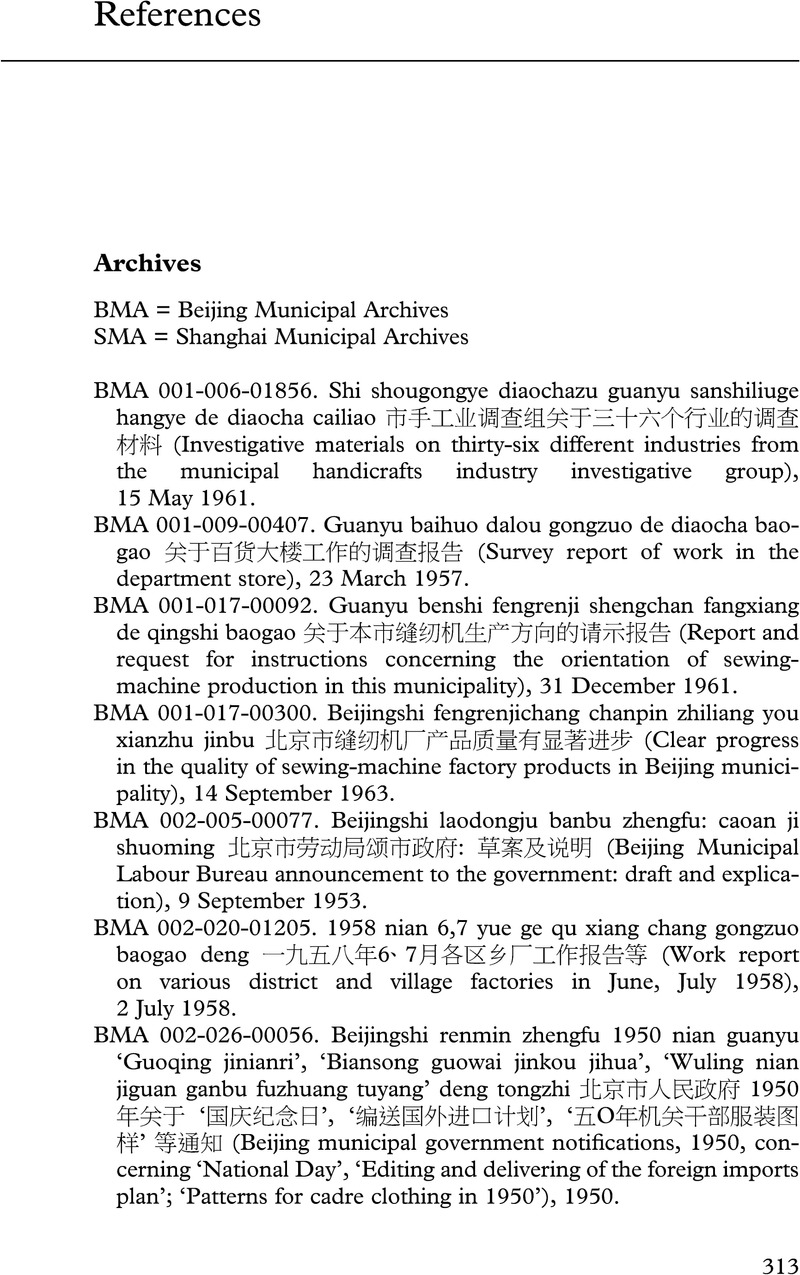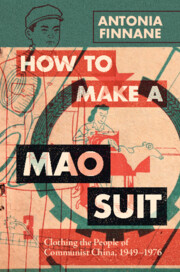Book contents
- How to Make a Mao Suit
- Cambridge Studies in the History of the People’s Republic of China
- How to Make a Mao Suit
- Copyright page
- Dedication
- Epigraph
- Contents
- Figures
- Maps
- Tables
- Acknowledgements
- Technical Notes and Key Dates
- Introduction
- 1 The Red Group Tailors and the Zhongshan Suit
- 2 Notions and Sewing Tools
- 3 Making Zhifu
- 4 Sewing Like a Girl
- 5 Rationing
- 6 The Time of the Sewing Machine
- 7 Pattern Books I
- 8 Pattern Books II
- 9 What Should Chinese Women Wear?
- Conclusion
- Book part
- Glossary
- References
- Index
- References
References
Published online by Cambridge University Press: 20 July 2023
- How to Make a Mao Suit
- Cambridge Studies in the History of the People’s Republic of China
- How to Make a Mao Suit
- Copyright page
- Dedication
- Epigraph
- Contents
- Figures
- Maps
- Tables
- Acknowledgements
- Technical Notes and Key Dates
- Introduction
- 1 The Red Group Tailors and the Zhongshan Suit
- 2 Notions and Sewing Tools
- 3 Making Zhifu
- 4 Sewing Like a Girl
- 5 Rationing
- 6 The Time of the Sewing Machine
- 7 Pattern Books I
- 8 Pattern Books II
- 9 What Should Chinese Women Wear?
- Conclusion
- Book part
- Glossary
- References
- Index
- References
Summary

- Type
- Chapter
- Information
- How to Make a Mao SuitClothing the People of Communist China, 1949–1976, pp. 313 - 359Publisher: Cambridge University PressPrint publication year: 2023



